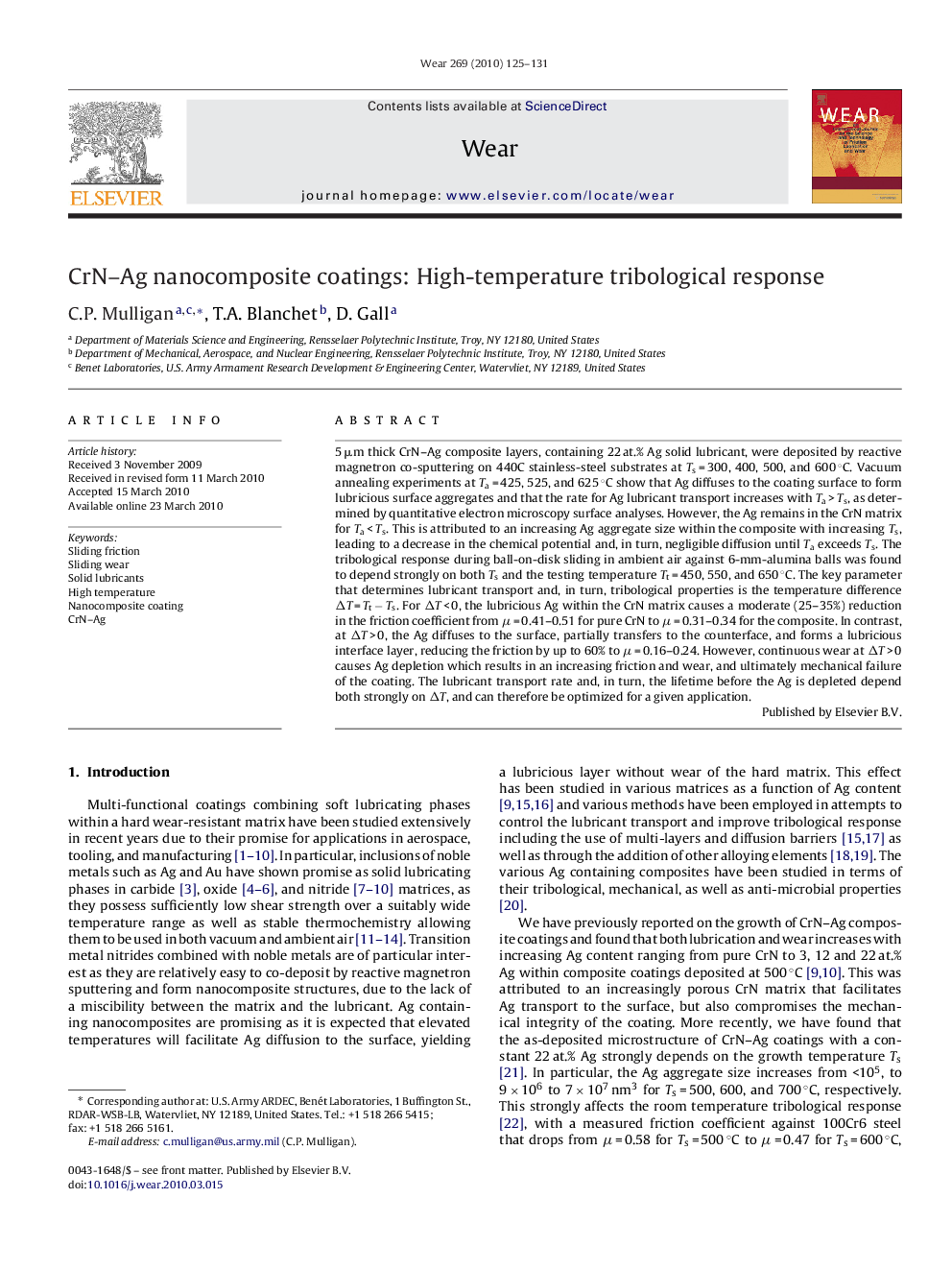| Article ID | Journal | Published Year | Pages | File Type |
|---|---|---|---|---|
| 619166 | Wear | 2010 | 7 Pages |
Abstract
5 μm thick CrN-Ag composite layers, containing 22 at.% Ag solid lubricant, were deposited by reactive magnetron co-sputtering on 440C stainless-steel substrates at Ts = 300, 400, 500, and 600 °C. Vacuum annealing experiments at Ta = 425, 525, and 625 °C show that Ag diffuses to the coating surface to form lubricious surface aggregates and that the rate for Ag lubricant transport increases with Ta > Ts, as determined by quantitative electron microscopy surface analyses. However, the Ag remains in the CrN matrix for Ta < Ts. This is attributed to an increasing Ag aggregate size within the composite with increasing Ts, leading to a decrease in the chemical potential and, in turn, negligible diffusion until Ta exceeds Ts. The tribological response during ball-on-disk sliding in ambient air against 6-mm-alumina balls was found to depend strongly on both Ts and the testing temperature Tt = 450, 550, and 650 °C. The key parameter that determines lubricant transport and, in turn, tribological properties is the temperature difference ÎT = Tt â Ts. For ÎT < 0, the lubricious Ag within the CrN matrix causes a moderate (25-35%) reduction in the friction coefficient from μ = 0.41-0.51 for pure CrN to μ = 0.31-0.34 for the composite. In contrast, at ÎT > 0, the Ag diffuses to the surface, partially transfers to the counterface, and forms a lubricious interface layer, reducing the friction by up to 60% to μ = 0.16-0.24. However, continuous wear at ÎT > 0 causes Ag depletion which results in an increasing friction and wear, and ultimately mechanical failure of the coating. The lubricant transport rate and, in turn, the lifetime before the Ag is depleted depend both strongly on ÎT, and can therefore be optimized for a given application.
Related Topics
Physical Sciences and Engineering
Chemical Engineering
Colloid and Surface Chemistry
Authors
C.P. Mulligan, T.A. Blanchet, D. Gall,
